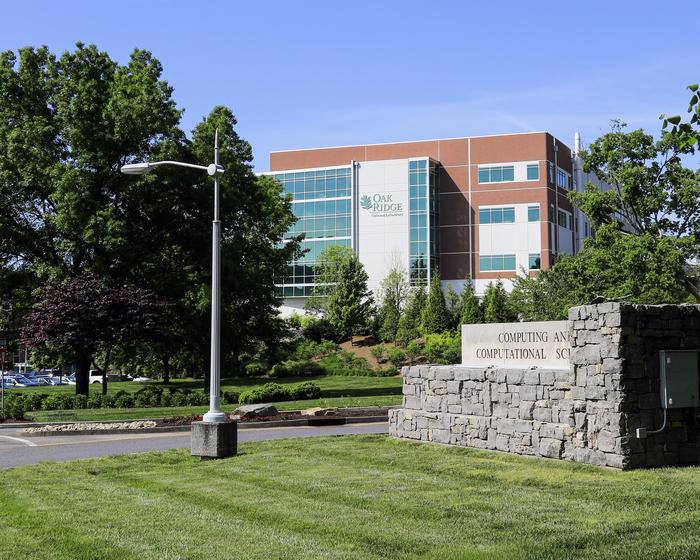Author:
DOE/OAK RIDGE NATIONAL LABORATORY
Date
07/22/2024

The Department of Energy released a request for proposals today to advance its leadership in high-performance computing, inviting vendors to submit their plans for a successor to Oak Ridge National Laboratory’s exascale (a quintillion or more calculations per second) supercomputer, Frontier.
The Department of Energy released a request for proposals today to advance its leadership in high-performance computing, inviting vendors to submit their plans for a successor to Oak Ridge National Laboratory’s exascale (a quintillion or more calculations per second) supercomputer, Frontier.
The future system, to be called Discovery, will be designed to offer new computational capabilities over Frontier, currently the fastest supercomputer in the world at 1.206 exaflops on the High-Performance Linpack, or HPL, benchmark. The target for Discovery’s delivery to the Oak Ridge Leadership Computing Facility, or OLCF, is 2027 or early 2028. The OLCF is a DOE Office of Science user facility at ORNL and home of Frontier.
The request for proposals, or RFPs, for Discovery sets a wide range of goals for the next-generation system, such as advanced artificial intelligence and machine learning capabilities, improved energy efficiency, full-system modeling and simulation and seamless interoperability with other DOE facilities through the Integrated Research Infrastructure, or IRI, initiative, which seeks to combine research tools and scientific facilities.
Unlike previous RFPs issued by the OLCF, the request does not cite a specific speedup goal over its predecessor, but the facility expects Discovery to deliver three to five times more computational throughput for benchmarks and scientific applications than Frontier.
“This project is exciting because we will be building something even more capable than Frontier, with technologies that will push the edge of what’s possible,” said ORNL’s Matt Sieger, the OLCF’s project director for Discovery.
The OLCF has a long legacy in delivering world-leading supercomputers on scope, budget and schedule. Since 2005, the OLCF has deployed the supercomputers Jaguar, Titan, Summit and Frontier, each the world’s fastest computer in its time. Additionally, in the past decade, the OLCF has improved the facility’s computational power by a factor of 500 while suppressing the energy consumption, which increased only by a factor of 4. Energy efficient computing will continue to be a priority for the OLCF.
Exascale computing’s promise rests on the ability to generate and synthesize massive amounts of data through detailed simulations and analytics so complex that previous generations of computers couldn’t process the calculations, and these systems are the basis upon which to build secure, trustworthy and energy efficient AI capabilities for the nation. The faster the computer, the more possibilities and probabilities can be plugged into the computational campaign to be tested against what’s already known. The process helps researchers target their experiments and fine-tune designs while saving the time and expense of real-world testing, producing results that are ready to be validated.
All of Discovery’s new, cutting-edge capabilities will be required to meet the future mission needs of the Advanced Scientific Computing Research, or ASCR, program within DOE’s Office of Science. ASCR supports U.S. research at hundreds of institutions, establishing open-access supercomputing and network facilities at DOE national laboratories.
“ASCR’s coordinated research efforts directed at exploiting the incredible power of high-performance computing allow scientists to solve the nation’s most pressing grand challenges in science, energy, and human health. These discoveries will help shape our understanding of the universe, advance our capabilities for the predictability of the Earth system, bolster U.S. economic competitiveness and contribute to a better future,” said Dr. Ceren Susut, associate director for science in ASCR.
Access to Discovery’s next-generation computational power and abilities in modeling and simulation, high-performance data analysis and AI will enable researchers to make breakthroughs across scientific and industrial domains. As with Frontier, scholars worldwide will have the opportunity to compete for computing time on Discovery to tackle major scientific challenges.
Potential areas of study include:
“Discovery will enable the scientific community to model real-world situations at new levels of detail. It will help us study challenging problems we can’t easily explore with experiment, observation or theory alone,” said Georgia Tourassi, ORNL associate laboratory director of computing and computational sciences. “Using Discovery, scientists will improve the safety and efficiency of nuclear power plants and aerospace engineering, pushing the boundaries of what’s possible in sustainable power generation and aviation. They will accelerate the development of new drugs and advanced materials. They will even gain deeper insights in global climate dynamics to inform critical decisions for our collective future.”
The RFP is being managed by UT-Battelle, which operates Oak Ridge National Laboratory on behalf of the Department of Energy.
EurekAlert!, the online, global news service operated by AAAS, the science society.